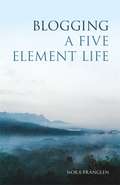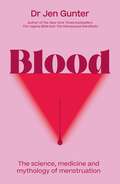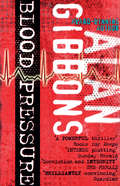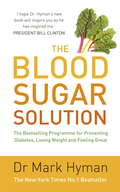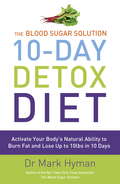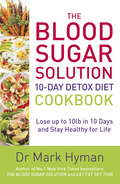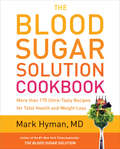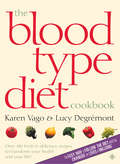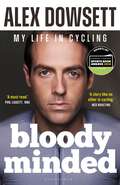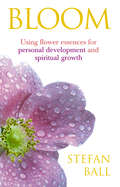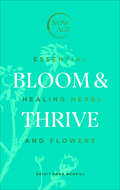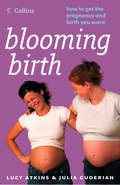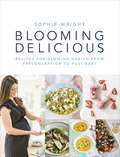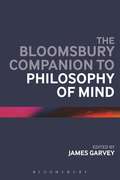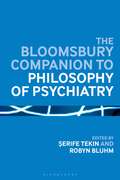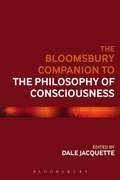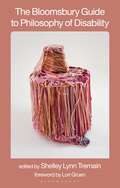- Table View
- List View
Blogging a Five Element Life (PDF)
by Nora FranglenBased on her widely read blog, this collection includes Nora Franglen's reflections on her own continually developing five element practice, and the lived world between 2014 and March 2017, a time of enormous change. Covering everything from politics, to her penchant for coffee shops, to how to treat patients effectively, and from tips on using moxa sticks to her acerbic thoughts on the effects of technology on society, Nora illustrates how the five elements influence, illuminate and enrich all aspects of her life, and vice versa.
Blood: The science, medicine and mythology of menstruation
by Dr. Jennifer Gunter'The world's most famous and outspoken gynaecologist' (The Guardian) fights myths and fearmongering with real science, inclusive facts, and shame-free advice on the topic that impacts more than 1.8 billion people worldwide: menstruation. Women can expect to have between 350 and 450 periods in a lifetime. So why is real information so hard to find? Despite its significance, most education about menstruation focuses either on increasing the chances of pregnancy or preventing it. And while both are crucial, women deserve to know more about their bodies than just what happens in service to reproduction. Not knowing how your body works makes it challenging to advocate for yourself. Consequently, many people suffer in silence thinking their bodies are uniquely broken or they turn to disreputable sources. Blood is a practical, empowering guide to what's typical, what's concerning and when to seek care - recounted with the no-nonsense expertise and frank, fearless wit that have made Dr Jen today's most trusted voice in women's health. Dr Jen answers all your period-related questions, including: What exactly happens during menstruation? How heavy is too heavy? How much should periods hurt? And provides essential information about topics such as: * The impact of stress and health on the menstrual cycle * Menstrual migraines, PMS and period diarrhea (yes, it's totally normal) * Polycystic Ovarian Syndrome (PCOS) and fibroids * Endometriosis and the latest treatments * The endometrium's (the uterine lining's) fascinating connection to the immune system * Different cultural perceptions of menstruation and how they affect girls and women * Menstruation and the trans and non-binary experience * Legitimate menstrual products and the facts behind toxic shock syndrome * The risks and benefits of hysterectomies Blood is about much more than biology. It's an all-in-one, revolutionary guide that will change the way we think about, talk about - and don't talk about - our bodies and our well-being.
Blood cells (large print)
by RnibThis page shows images of different types of blood cells. There is a locator dot shown, which will be at the top left, when the image is the correct way up. On the left of the page are two red blood cells. The top one is shown from the top and the bottom one slightly from the side. They have an unusual shape called a biconcave disc. The rim of the disc is thicker than the centre. In the centre of the page are two types of white blood cell with different nuclei. On the right of the page is a small group of eight platelets. They are fragments of cells with no nucleus.
Blood cells (UEB contracted)
by RnibThis page shows images of different types of blood cells. There is a locator dot shown, which will be at the top left, when the image is the correct way up. On the left of the page are two red blood cells. The top one is shown from the top and the bottom one slightly from the side. They have an unusual shape called a biconcave disc. The rim of the disc is thicker than the centre. In the centre of the page are two types of white blood cell with different nuclei. On the right of the page is a small group of eight platelets. They are fragments of cells with no nucleus.
Blood cells (UEB uncontracted)
by RnibThis page shows images of different types of blood cells. There is a locator dot shown, which will be at the top left, when the image is the correct way up. On the left of the page are two red blood cells. The top one is shown from the top and the bottom one slightly from the side. They have an unusual shape called a biconcave disc. The rim of the disc is thicker than the centre. In the centre of the page are two types of white blood cell with different nuclei. On the right of the page is a small group of eight platelets. They are fragments of cells with no nucleus.
Blood Pressure
by Alan GibbonsAidan has it all - a happy home in leafy suburbia with two cars parked on the drive, and all a boy could ask for in terms of designer labels and gadgets. He's top of the class, captain of the swimming team and has the gorgeous Emily hanging on his every word. So a trip up North with Mum to visit his dying Grandfather doesn't go down well. But it does teach Aidan a thing or two about real life - and friendships, trust, loyalty and survival. He's shattered to discover his real father is a gangland drugs dealer recently released from prison and out to regain his scrap of turf whatever it takes. He's surprised and confused to find he's falling in love with the intriguing Jade even though she's already pregnant after a fling with one of the bad lads who hangs out on the estate. He's humbled by his grandparents, how little they have, but how much wisdom and love they offer him. In a crackingly paced, hard-hitting, real life thriller that deals with drugs and crime, Alan Gibbons also describes the summer of one boy who must grow up super-fast - from hormonal to responsible - in one huge leap of faith.
The Blood Sugar Solution: The Bestselling Programme for Preventing Diabetes, Losing Weight and Feeling Great
by Mark HymanThe No.1 New York Times bestselling programme to fight diabetes, lose weight, and stay healthy.By 2025 there will be more than 4 million people in Britain with diabetes. Every day, 400 new cases are diagnosed. In The Blood Sugar Solution, Dr Mark Hyman reveals that the secret solution to losing weight and preventing diabetes - as well as heart disease, stroke, dementia, and cancer - is balanced insulin levels. The Blood Sugar Solution, Dr. Hyman gives us the tools to achieve this with his revolutionary six-week healthy-living programme and the seven keys to achieving wellness - nutrition, hormones, inflammation, digestion, detoxification, energy metabolism, and a calm mind. With advice on diet, exercise, supplements and medication, and options to personalise the plan for optimal results, The Blood Sugar Solution teaches readers how to maintain lifelong health. Groundbreaking and timely, The Blood Sugar Solution is the fastest way to lose weight, prevent disease, and feel better than ever.
The Blood Sugar Solution 10-Day Detox Diet: Activate Your Body's Natural Ability to Burn fat and Lose Up to 10lbs in 10 Days
by Mark HymanDr. Hyman's revolutionary weight-loss programme, based on the #1 New York Times bestseller The Blood Sugar Solution, supercharged for immediate results.The key to losing weight and keeping it off is maintaining low insulin levels. Based on Dr. Hyman's groundbreaking Blood Sugar Solution program, The Blood Sugar Solution 10-Day Detox Diet presents strategies for reducing insulin levels and producing fast and sustained weight loss. You can lose up to 10lbs in 10 days!In The Blood Sugar Solution 10-Day Detox Diet Dr. Hyman explains how to: · activate your natural ability to burn fat - especially stubborn belly fat· reduce inflammation· reprogramme your metabolism· shut off your fat-storing genes· de-bug your digestive system· create effortless appetite control· and soothe the stress to shed the pounds.With convenient and practical tools such as meal plans, recipes, and shopping lists, as well as step-by-step, easy-to-follow advice on green living, supplements, medication, exercise, and more, The Blood Sugar Solution 10-Day Detox Diet is the fastest way to lose weight, prevent disease, and feel your best.
The Blood Sugar Solution 10-Day Detox Diet Cookbook: Lose up to 10lb in 10 days and stay healthy for life
by Mark HymanDr. Hyman's bestselling The Blood Sugar Solution 10-Day Detox Diet offers readers a step-by-step guide for losing weight and reversing disease. Now Dr. Hyman shares more than 150 delicious recipes so you can continue on your path to good health. With easy-to-prepare, delicious recipes for every meal - including breakfast smoothies, lunches like Waldorf Salad with Smoked Paprika, and Grass-Fed Beef Bolognese for dinner - you can achieve fast and sustained weight loss by activating your natural ability to burn fat, reducing insulin levels and inflammation, reprogramming your metabolism, shutting off your fat-storing genes, creating effortless appetite control, and soothing stress. Your health is a life-long journey. The Blood Sugar Solution 10-Day Detox Diet Cookbook helps make that journey both do-able and delicious.
The Blood Sugar Solution Cookbook: More than 175 Ultra-Tasty Recipes for Total Health and Weight Loss
by Dr. Mark HymanFollowing Dr. Hyman's scientifically based program for rebalancing insulin and blood sugar levels, this cookbook presents 175 delectable recipes that are free of allergens and harmful inflammatory ingredients. In The Blood Sugar Solution Cookbook, Dr. Mark Hyman shares recipes that support the Blood Sugar Solution lifestyle. In 1900, only two percent of meals in America were eaten outside the home; now it is over fifty percent. Dr. Hyman calls for readers to take back their health by taking back their kitchens. Readers will exchange toxic factory-made foods for nutritious and easy-to-make dishes such as Chicken Satay with Peanut Sauce, Mexican Shrimp Ceviche, Tuscan Zucchini Soup, Raspberry Banana Cream Pie Smoothie, Chocolate Nut Cake, and more. The Blood Sugar Solution Cookbook will illuminate your inner nutritionist and chef.
The Blood Type Diet Cookbook
by Karen Vago Lucy DegremontAn eating plan and over 100 delicious recipes to suit each of the blood types, in a diet made famous by D’Adamo’s bestselling Eat Right for Your Type.
Bloody Minded: My Life in Cycling
by Alex Dowsett'A must read'Phil Liggett, MBE'A story like no other in cycling'Ned BoultingIMAGINE COMPETING IN THE WORLD'S MOST BRUTAL CYCLE RACES, KNOWING THAT A CRASH COULD BE FATALAlex Dowsett is one of Britain's greatest cyclists. He has ridden Grand Tours and Classics for elite teams including Sky and Movistar and broke the iconic World Hour Record – the ultimate time trial challenge. With humour, insight and honesty, Alex recounts his years as a pro-cyclist and the challenges he has faced in his struggle to reach the top. Alex has achieved all this despite being the only top sportsperson in the world with haemophilia A. He describes how the condition – in which falls can be fatal – both blighted his young sporting life, and boosted his determination to succeed. Every professional cyclist requires courage, but Alex takes fearlessness to another level in a sport where injury and suffering are a given. With an all-star cycling cast, including Bradley Wiggins, Chris Froome, Mark Cavendish and Lance Armstrong, this pulsating book lifts the lid on life in the peloton at the world's top level. From his highs – including Giro d'Italia stage victories – to his frustrations at the injustices he faced in the sport, Alex's memoir perfectly chronicles a career in which he was driven equally by love and rage.Combining Alex's personal triumphs with his unique take on being part of the golden age of British cycling, this is an unmissable tale of sporting endeavour.'A fascinating insight into the mindset of an elite sportsman who overcame great odds to reach the very top'Simon Brotherton'The humblest super-talent in the peloton, proving nice guys can win. A wonderful book'Carlton Kirby'An inspiration for anyone who wants to do whatever they're told they can't.'Michael Hutchinson'Such an inspiring tale. Poignant and moving, and told with forthright honesty'Peter Cossins
Bloody Minded: My Life in Cycling
by Alex Dowsett'Immensely readable and revealing'The Guardian'A must read'Phil Liggett, MBE'A story like no other in cycling'Ned BoultingIMAGINE COMPETING IN THE WORLD'S MOST BRUTAL CYCLE RACES, KNOWING THAT A CRASH COULD BE FATALAlex Dowsett is one of Britain's greatest cyclists. He has ridden Grand Tours and Classics for elite teams including Sky and Movistar and broke the iconic World Hour Record – the ultimate time trial challenge. With humour, insight and honesty, Alex recounts his years as a pro-cyclist and the challenges he has faced in his struggle to reach the top. Alex has achieved all this despite being the only able-bodied elite sportsperson in the world with haemophilia A. He describes how the condition – in which falls can be fatal – both blighted his young sporting life, and boosted his determination to succeed. Every professional cyclist requires courage, but Alex takes fearlessness to another level in a sport where injury and suffering are a given. With an all-star cycling cast, including Bradley Wiggins, Chris Froome, Mark Cavendish and Lance Armstrong, this pulsating book lifts the lid on life in the peloton at the world's top level. From his highs – including Giro d'Italia stage victories – to his frustrations at the injustices he faced in the sport, Alex's memoir perfectly chronicles a career in which he was driven equally by love and rage.Combining Alex's personal triumphs with his unique take on being part of the golden age of British cycling, this is an unmissable tale of sporting endeavour.'A fascinating insight into the mindset of an elite sportsman who overcame great odds to reach the very top'Simon Brotherton'The humblest super-talent in the peloton, proving nice guys can win. A wonderful book'Carlton Kirby'An inspiration for anyone who wants to do whatever they're told they can't.'Michael Hutchinson'Such an inspiring tale. Poignant and moving, and told with forthright honesty'Peter Cossins
Bloom: Using flower essences for personal development and spiritual growth
by Stefan BallInsightful and engaging, Bloom explains how to use the Bach Flower Remedies for personal and spiritual growth. Written by a key team member at the Dr Edward Bach Centre, Bloom reveals how the Bach flower essences offer a complete system that can help us to change our lives for the better. Chapters 1-7 explore the ways in which the remedies relate to different life experiences, as well as intriguing schools of religious and philosophical belief. Interspersed with chapters 1-7, chapters i-vii look closely at the individual remedies in the system, explaining when to take each one and what they will do for you. Containing a wealth of personal stories, individual testimonies and fascinating anecdotes, Bloom has something to offer to anyone interested in the Bach Flower Remedies or drawn to personal development in general. Discover how to use the remedies to improve your own life and to grow into your full potential.
Bloom & Thrive: Essential Healing Herbs and Flowers (Now Age series) (Now Age Series)
by Brigit Anna McNeillWorried about a big meeting? Can't sleep? Low on energy? Discover the powerful herbs and flowers that can help you to live your best life. Learn which herbs and flowers will aid calm, happiness, boost energy and how you can work simple natural remedies into your daily routine. This is a down-to-earth, expert introduction to the life-changing powers of nature's potent remedies from forager, herbalist and wild plant medicine teacher Brigit Anna McNeill.
Blooming Birth: How To Get The Pregnancy And Birth You Want
by Lucy Atkins Julia GuderianThe busy woman’s guide to taking control of pregnancy and birth.
Blooming Delicious: Your Pregnancy Cookbook – from Conception to Birth and Beyond
by Sophie WrightWhen Sophie Wright, an outstanding chef with a passion for healthy and delicious food, found out she was pregnant, she decided to make it her mission to create easy, nutrient-packed and great-tasting recipes to enjoy during pregnancy. In this brilliant pregnancy cookbook, Sophie shares her favourite recipes for every stage, from pre-conception right through to early motherhood. With the help of top nutritional therapist Henrietta Norton, Sophie carefully selects and combines ingredients to nourish you and your baby at each crucial stage. Beautifully photographed and designed, this stunning book includes over 100 mouth-watering recipes that deliver on taste and nutrition. Divided into trimesters, pre- and post-pregnancy, recipes include: Miso Salmon with Edamame, Super Seedy Soda Bread, Chicken Burgers with Avocado, Banana, Date and Coconut Energy Truffles, and more!
The Bloomsbury Companion to Philosophy of Mind (Bloomsbury Companions)
by James GarveyFeaturing thirteen specially commissioned chapters on core subjects, The Bloomsbury Companion to Philosophy of Mind is an essential tool for all those studying and working in the field, purpose-built for use on courses in this area of philosophy.Beginning with 'How to Use this Book' the Companion includes overviews of perennial problems and new directions in contemporary philosophy of mind, an extended glossary of terms for quick reference, a detailed chronology, a guide to research for ongoing study and a comprehensive bibliography of key classic and contemporary publications in the philosophy of mind. From new questions concerning qualia, representation, embodiment and cognition to fresh thinking about the long-standing problems of physicalism, dualism, personal identity and mental causation, this book is an authoritative survey of the latest research from experts in one of the most active areas of philosophical inquiry.
The Bloomsbury Companion to Philosophy of Mind (Bloomsbury Companions)
by James GarveyFeaturing thirteen specially commissioned chapters on core subjects, The Bloomsbury Companion to Philosophy of Mind is an essential tool for all those studying and working in the field, purpose-built for use on courses in this area of philosophy.Beginning with 'How to Use this Book' the Companion includes overviews of perennial problems and new directions in contemporary philosophy of mind, an extended glossary of terms for quick reference, a detailed chronology, a guide to research for ongoing study and a comprehensive bibliography of key classic and contemporary publications in the philosophy of mind. From new questions concerning qualia, representation, embodiment and cognition to fresh thinking about the long-standing problems of physicalism, dualism, personal identity and mental causation, this book is an authoritative survey of the latest research from experts in one of the most active areas of philosophical inquiry.
The Bloomsbury Companion to Philosophy of Psychiatry (Bloomsbury Companions)
by Serife Tekin Robyn BluhmThis book explores the central questions and themes lying at the heart of a vibrant area of philosophical inquiry. Aligning core issues in psychiatry with traditional philosophical areas, it presents a focused overview of the historical and contemporary problems dominating the philosophy of psychiatry. Beginning with an introduction to philosophy of psychiatry, the book addresses what psychiatry is and distinguishes it from other areas of medical practice, other health care professions and psychology. With each section of the companion corresponding to a philosophical subject, contributors systematically cover relevant topics in philosophy of mind, philosophy of science, ethics, social and political philosophy, metaphysics, epistemology, phenomenology, and philosophy of medicine. Looking ahead to new research directions, chapters address recent issues including the metaphysics of mental disorders, gender and race in psychiatry and psychiatric ethics. Featuring discussion questions, suggestions for further reading and an annotated bibliography, The Bloomsbury Companion to Philosophy of Psychiatry is an accessible survey of the debates and developments in the field suitable for undergraduates in philosophy and professional philosophers new to philosophy of psychiatry.
The Bloomsbury Companion to Philosophy of Psychiatry (Bloomsbury Companions)
by Serife Tekin Robyn BluhmThis book explores the central questions and themes lying at the heart of a vibrant area of philosophical inquiry. Aligning core issues in psychiatry with traditional philosophical areas, it presents a focused overview of the historical and contemporary problems dominating the philosophy of psychiatry. Beginning with an introduction to philosophy of psychiatry, the book addresses what psychiatry is and distinguishes it from other areas of medical practice, other health care professions and psychology. With each section of the companion corresponding to a philosophical subject, contributors systematically cover relevant topics in philosophy of mind, philosophy of science, ethics, social and political philosophy, metaphysics, epistemology, phenomenology, and philosophy of medicine. Looking ahead to new research directions, chapters address recent issues including the metaphysics of mental disorders, gender and race in psychiatry and psychiatric ethics. Featuring discussion questions, suggestions for further reading and an annotated bibliography, The Bloomsbury Companion to Philosophy of Psychiatry is an accessible survey of the debates and developments in the field suitable for undergraduates in philosophy and professional philosophers new to philosophy of psychiatry.
The Bloomsbury Companion to the Philosophy of Consciousness (Bloomsbury Companions)
by Katherine J. Morris Daniel Stoljar Ted Honderich Paul Bello Scott Soames Dale JacquetteFrom Descartes and Cartesian mind-body dualism in the 17th century though to 21st-century concerns about artificial intelligence programming, The Bloomsbury Companion to the Philosophy of Consciousness presents a compelling history and up-to-date overview of this burgeoning subject area.Acknowledging that many of the original concepts of consciousness studies are found in writings of past thinkers, it begins with introductory overviews to the thought of Descartes through to Kant, covering Brentano's restoration of empiricism to philosophical psychology and the major figures of the late 19th and early 20th centuries: Russell, Wittgenstein, Ryle and James. These opening chapters on the forces in the history of consciousness lay the groundwork needed to understand how influential contemporary thinkers in the philosophy of mind interpret the concept of consciousness. Featuring leading figures in the field, Part II discusses current issues in a range of topics progressing from the so-called hard problem of understanding the nature of consciousness, to the methodology of invoking the possibility of philosophical zombies and the prospects of reductivism in philosophy of mind. Part III is dedicated to new research directions in the philosophy of consciousness, including chapters on experiment objections to functionalism and the scope and limits of artificial intelligence. Equipped with practical research resources including an annotated bibliography, a research guide and a glossary, The Bloomsbury Companion to the Philosophy of Consciousness is an authoritative guide for studying the past, present and future of consciousness.
The Bloomsbury Companion to the Philosophy of Consciousness (Bloomsbury Companions)
by Katherine J. Morris Daniel Stoljar Ted Honderich Paul Bello Scott Soames Dale JacquetteFrom Descartes and Cartesian mind-body dualism in the 17th century though to 21st-century concerns about artificial intelligence programming, The Bloomsbury Companion to the Philosophy of Consciousness presents a compelling history and up-to-date overview of this burgeoning subject area.Acknowledging that many of the original concepts of consciousness studies are found in writings of past thinkers, it begins with introductory overviews to the thought of Descartes through to Kant, covering Brentano's restoration of empiricism to philosophical psychology and the major figures of the late 19th and early 20th centuries: Russell, Wittgenstein, Ryle and James. These opening chapters on the forces in the history of consciousness lay the groundwork needed to understand how influential contemporary thinkers in the philosophy of mind interpret the concept of consciousness. Featuring leading figures in the field, Part II discusses current issues in a range of topics progressing from the so-called hard problem of understanding the nature of consciousness, to the methodology of invoking the possibility of philosophical zombies and the prospects of reductivism in philosophy of mind. Part III is dedicated to new research directions in the philosophy of consciousness, including chapters on experiment objections to functionalism and the scope and limits of artificial intelligence. Equipped with practical research resources including an annotated bibliography, a research guide and a glossary, The Bloomsbury Companion to the Philosophy of Consciousness is an authoritative guide for studying the past, present and future of consciousness.
The Bloomsbury Guide to Philosophy of Disability
by Shelley Lynn TremainThe Bloomsbury Guide to Philosophy of Disability is a revolutionary collection encompassing the most innovative and insurgent work in philosophy of disability. Edited and anthologized by disabled philosopher Shelley Lynn Tremain, this book challenges how disability has historically been represented and understood in philosophy: it critically undermines the detrimental assumptions that various subfields of philosophy produce; resists the institutionalized ableism of academia to which these assumptions contribute; and boldly articulates new anti-ableist, anti-sexist, anti-racist, queer, anti-capitalist, anti-carceral, and decolonial insights and perspectives that counter these assumptions. This rebellious and groundbreaking book's chapters–most of which have been written by disabled philosophers–are wide-ranging in scope and invite a broad readership. The chapters underscore the eugenic impetus at the heart of bioethics; talk back to the whiteness of work on philosophy and disability with which philosophy of disability is often conflated; and elaborate phenomenological, poststructuralist, and materialist approaches to a variety of phenomena. Topics addressed in the book include: ableism and speciesism; disability, race, and algorithms; race, disability, and reproductive technologies; disability and music; disabled and trans identities and emotions; the apparatus of addiction; and disability, race, and risk. With cutting-edge analyses and engaging prose, the authors of this guide contest the assumptions of Western disability studies through the lens of African philosophy of disability and the developing framework of crip Filipino philosophy; articulate the political and conceptual limits of common constructions of inclusion and accessibility; and foreground the practices of epistemic injustice that neurominoritized people routinely confront in philosophy and society more broadly.A crucial guide to oppositional thinking from an international, intersectional, and inclusive collection of philosophers, this book will advance the emerging field of philosophy of disability and serve as an antidote to the historical exclusion of disabled philosophers from the discipline and profession of philosophy.The Bloomsbury Guide to Philosophy of Disability is essential reading for faculty and students in philosophy, disability studies, political theory, Africana studies, Latinx studies, women's and gender studies, LGBTQ studies, and cultural studies, as well as activists, cultural workers, policymakers, and everyone else concerned with matters of social justice.Description of the book's cover: The book's title appears on two lines across the top of the cover which is a salmon tone. The names of the editor and the author of the foreword appear in white letters at the bottom of the book. The publisher's name is printed along the right side in white letters. At the centre, a vertical white rectangle is the background for a sculpture by fibre artist Judith Scott. The sculpture combines layers of shiny yarn in various colours including orange, pink, brown, and rust woven vertically on a large cylinder and horizontally around a smaller cylinder, as well as blue yarn woven around a protruding piece at the bottom of the sculpture. The sculpture seems to represent a body and head of a being sitting down, a being with one appendage, a fat person, or a little person.
The Bloomsbury Guide to Philosophy of Disability
The Bloomsbury Guide to Philosophy of Disability is a revolutionary collection encompassing the most innovative and insurgent work in philosophy of disability. Edited and anthologized by disabled philosopher Shelley Lynn Tremain, this book challenges how disability has historically been represented and understood in philosophy: it critically undermines the detrimental assumptions that various subfields of philosophy produce; resists the institutionalized ableism of academia to which these assumptions contribute; and boldly articulates new anti-ableist, anti-sexist, anti-racist, queer, anti-capitalist, anti-carceral, and decolonial insights and perspectives that counter these assumptions. This rebellious and groundbreaking book's chapters–most of which have been written by disabled philosophers–are wide-ranging in scope and invite a broad readership. The chapters underscore the eugenic impetus at the heart of bioethics; talk back to the whiteness of work on philosophy and disability with which philosophy of disability is often conflated; and elaborate phenomenological, poststructuralist, and materialist approaches to a variety of phenomena. Topics addressed in the book include: ableism and speciesism; disability, race, and algorithms; race, disability, and reproductive technologies; disability and music; disabled and trans identities and emotions; the apparatus of addiction; and disability, race, and risk. With cutting-edge analyses and engaging prose, the authors of this guide contest the assumptions of Western disability studies through the lens of African philosophy of disability and the developing framework of crip Filipino philosophy; articulate the political and conceptual limits of common constructions of inclusion and accessibility; and foreground the practices of epistemic injustice that neurominoritized people routinely confront in philosophy and society more broadly.A crucial guide to oppositional thinking from an international, intersectional, and inclusive collection of philosophers, this book will advance the emerging field of philosophy of disability and serve as an antidote to the historical exclusion of disabled philosophers from the discipline and profession of philosophy.The Bloomsbury Guide to Philosophy of Disability is essential reading for faculty and students in philosophy, disability studies, political theory, Africana studies, Latinx studies, women's and gender studies, LGBTQ studies, and cultural studies, as well as activists, cultural workers, policymakers, and everyone else concerned with matters of social justice.Description of the book's cover: The book's title appears on two lines across the top of the cover which is a salmon tone. The names of the editor and the author of the foreword appear in white letters at the bottom of the book. The publisher's name is printed along the right side in white letters. At the centre, a vertical white rectangle is the background for a sculpture by fibre artist Judith Scott. The sculpture combines layers of shiny yarn in various colours including orange, pink, brown, and rust woven vertically on a large cylinder and horizontally around a smaller cylinder, as well as blue yarn woven around a protruding piece at the bottom of the sculpture. The sculpture seems to represent a body and head of a being sitting down, a being with one appendage, a fat person, or a little person.
